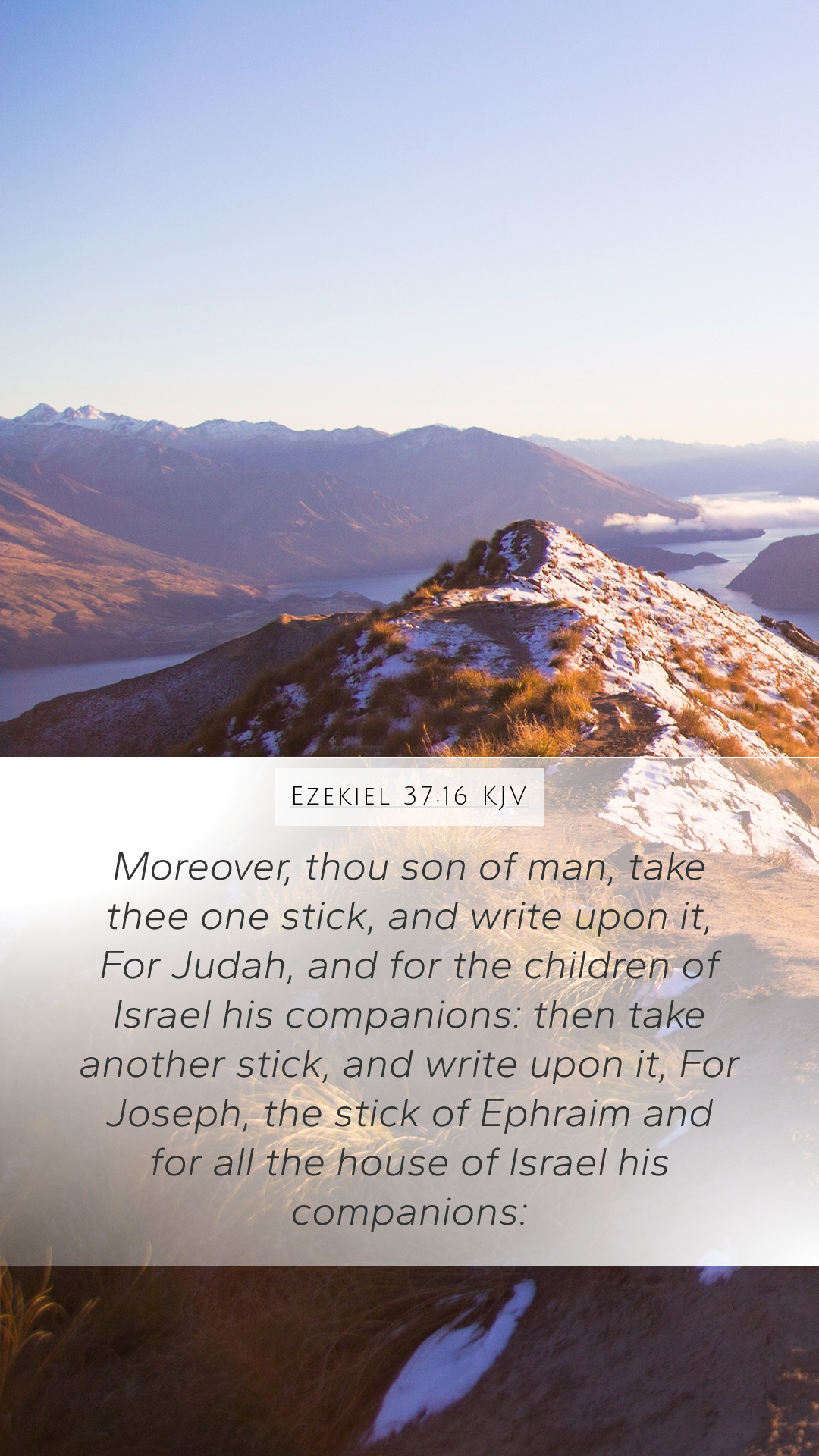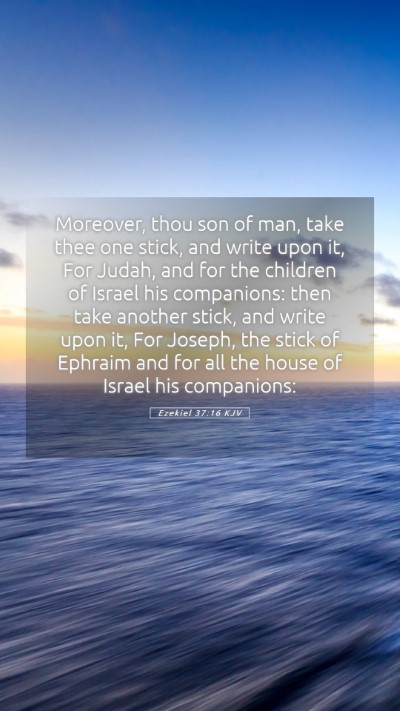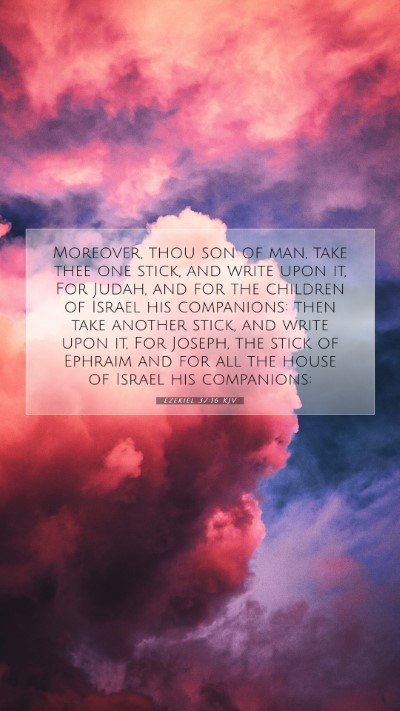Ezekiel 37:16 - Understanding the Significance
Bible Verse: Ezekiel 37:16
Verse: "Moreover, thou son of man, take thee one stick, and write upon it, For Judah, and for the children of Israel his companions: then take another stick, and write upon it, For Joseph, the stick of Ephraim, and for all the house of Israel his companions."
Overview of Ezekiel 37:16
Ezekiel 37:16 is part of a profound prophetic declaration to the people of Israel during their Babylonian exile. In this verse, God commands Ezekiel to take two sticks that will represent the divided kingdoms of Israel and Judah, signifying the reunification that is to come. This act serves as a vivid illustration of the restoration of God's people.
Key Themes and Analysis
- Symbolism of the Sticks: The two sticks represent the divided kingdoms, Judah and Israel, reflecting historical enmity and separation. Ezekiel's actions are a prophetic sign of unity.
- Prophetic Restoration: The command to write on the sticks highlights God's promise to restore not just the physical land, but to revive the hearts of His people, leading to spiritual renewal.
- Underlining Divine Sovereignty: The emphasis on God’s directed actions signifies His control over history and His unchanging covenantal promises to Israel.
Commentary Insights
Matthew Henry's Commentary
Matthew Henry emphasizes the nature of the symbols used in this chapter. He talks about how the division of the kingdoms is a sad reflection of disobedience. Yet, God uses this method to declare His intention to reunite and bless His people.
Albert Barnes' Notes
According to Barnes, this act signifies God's restoration of Israel, which involves gathering all factions into one. This unity will be spiritually significant, reflecting a living relationship with their God. He notes this as an important prophetic declaration for future generations.
Adam Clarke’s Commentary
Clarke elaborates on the necessity of the signs used by Ezekiel. He points out that God often uses tangible symbols to communicate profound truths. Clarke argues that the two sticks reflect not only current realities but also the hope of coming together as one people under God’s covenant.
Practical Applications
- Understanding Unity in Diversity: Just as the two sticks represent different groups, this verse calls believers to strive for unity in diversity within their congregations and communities.
- Hope of Restoration: The promise of restoration serves as an encouraging reminder that no situation is beyond God's power to redeem, suitable for personal and communal applications in times of distress.
- Biblical Exegesis: Engaging with this passage encourages deeper scriptural analysis, facilitating a recognition of God's ongoing work in the lives of believers.
Related Bible Verses
- Jeremiah 31:31: This verse discusses God's new covenant with the house of Israel and Judah.
- Isaiah 11:13: This verse speaks of the jealousy between Judah and Israel being removed, which ties into Ezekiel's vision of reunification.
- Romans 11:17-24: Paul speaks about the grafting of the Gentiles into the family of God, highlighting God's inclusive plan.
Conclusion
Ezekiel 37:16 serves as both a historical reference to the division within Israel and a prophetic promise of future unity and restoration. By understanding the richness of this passage through various lenses provided by public domain commentaries, believers gain deeper insights into God’s redemptive work. In Bible study groups and personal reflections, this verse holds timeless relevance in applying God’s promise of hope and unity in today’s fractured world.


